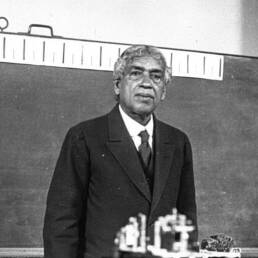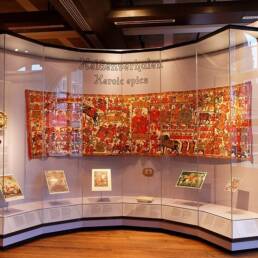As you walk past the Metro Inox Junction in the Dhobi Talao area of Mumbai, you will be stopped in your tracks by this tall, beautiful structure in the middle of the road . It’s an architectural wonder that resembles a lost fountain in a town square some 4000 miles away in England’s east Midlands.
In the late 1980s Arun Kotnis, an architect based in Northampton, England, was tasked to redesign the Northampton Market Square. It was to be done before the 800th anniversary of granting the town charter.
To redesign Market Square which had been the beating heart of the town for many centuries, Arun decided to delve into the history of the plaza and how it was interwoven into the town’s character over the years.
His research revealed the square had changed quite a lot. However, there was something in the historical documents and maps that was missing from the present-day Market Square, and Arun found it quite glaring. It was a fountain.
Yes! A fountain. But this was not just any fountain; this was a 45-feet high and 19-feet wide magnificent work of the neo-industrial era iron craftmanship, with intricate decorations cast in bronze.
It was gifted to the town by Samuel Issac, captain of the Northamptonshire Rifle Volunteers in 1863 to commemorate the marriage of the Prince of Wales Albert and Princess Alexandra of Denmark. Since then it has been known as the Issac Fountain.
It included a decorative, sculptured jamb on each corner and four water basins or tazzas. The fountain was built and designed locally, and it was the cynosure of all eyes at Market Square for almost a century, until it was brought down in 1962.
Arun was quite rightly intrigued with its sheer size and ornate craftsmanship. The fountain was a marvel of a bygone era. On further research, it was found that a couple of replicas were sent to Australia and India.
The one sent to Australia was supposedly lost in transit , but the Indian replica had been mentioned in an article written by historian Dr. Ernest Reynolds in a magazine called ‘Northampton Town Affairs’ (dated December 1952).
During his travels in Bombay, to his utter amazement, Dr. Reynolds came across a twin of the Market Square fountain opposite the Robert Money school in the Dhobi Talao area.
Reynolds wrote “No this was nothing to do with dreams, surrealist fantasies of the unconscious or a Christmas Eve hangover, but a sober fact. There it stood, the identical familiar bright green fountain, every cast-iron twirl, scroll and value the same.”
This was not the first time Northampton and Mumbai had been placed together on the same plane. Charles Bradlaugh, a British parliamentarian from Northampton, also called ‘Member of India,’ once acted as a mentor for Dadabhai Naoroji in the early days of Indian nationalism.
For Bombayites, however, the fountain with its elaborate structure, beautifully sculptured column, and water jets, was the ‘Fitzgerald fountain’ and not the Issac fountain. But how did a replica of a structure in Northampton make its way to the Indian west coast and be named differently?
According to The Times of India dated 12th March 1868, this fountain was ordered from England by Rustomjee Jamsetjee Jejeebhoy, son of the cotton merchant and well-known philanthropist, Sir Jamsetjee Jejeebhoy.
Mr. Arthur Crawford, who was the first municipal commissioner of Bombay, wanted to make notable improvements to the city skyline,. It was his idea to have a light column adorn the Dhobi Talao area, and Rustomjee Jejeebhoy was more than happy to pay for it.
However, things didn’t exactly go according to plan as Rustomjee had a financial crisis. So, the Esplanade Fee Fund Committee bought the fountain and gave it to the city.It was named in honor of Sir Seymour Fitzgerald, the then governor of Bombay.
Legend has it that the fountain with its prominent light on top, used to act as a lighthouse for incoming ships to Bombay harbor, long before the Prongs Lighthouse was built.
The Fitzgerald fountain was moved due to increasing traffic in the area in the 1960s and later kept in Dr. Bhau Daji Lad Museum where it lay neglected for years. It was here that Arun and his partner, Jona, found it when they came looking.
It was exactly as they hoped it would be – the striking resemblance was hard to miss. Together with archaeologist Peter Perkins, and a team of Indian researchers led by architect Pankaj Joshi, they were able to determine that this fountain was indeed a replica of the Northampton one.
In 2020, after years of work and much help from the Bombay Municipal Corporation, the fountain went back to its original place and though the city around it has changed, the fountain not only remains an iconic monument but also stands testimony to the rich history of iron craftsmanship.
However, Arun’s wish to recreate the original fountain is still a far-fetched dream. The Market Square did get a smaller fountain after the original was vandalized and demolished in 1962, but didn’t live up to the expectations of the local people.
Sources: The Tale of Two Fountains Made in Northampton by Arun and Jona Kotnis, https://www.bbc.com/news/uk-england-northamptonshire-51754123




